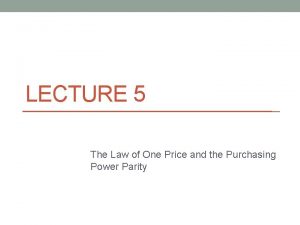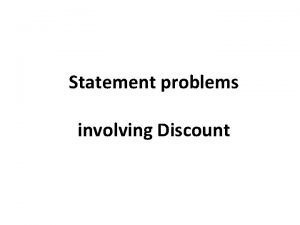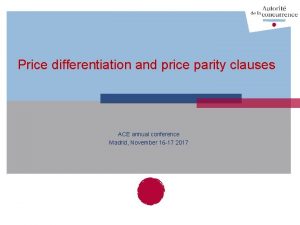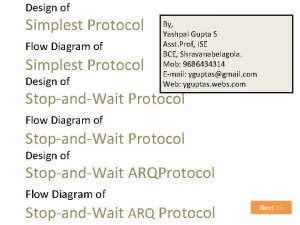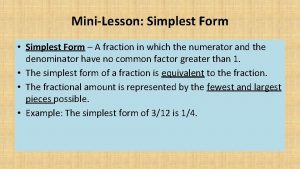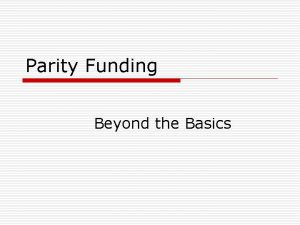Definitions Price Parity The simplest way if the







- Slides: 7

Definitions

Price Parity • The simplest way, if the data are available, is to consult the country's trade statistics. – For imports, the appropriate measures are the socalled c. i. f. prices. They often can be obtained by dividing the value of the imported commodity by the quantity imported. – For exports, the appropriate values are f. o. b. prices, computed in the same way.

Price Parity • Using local sources may be misleading, however, when only limited amounts have been traded or trade has taken place under special concessional circumstances. • In this case, the alternative is to use quotes from a major international market in which a large volume of the good is traded, adjusted for international shipping. • Data on insurance and freight can be obtained from shipping companies or freight forwarders.

Price Parity • The computation of import parity prices using international market sources begins with the f. o. b. price at the border of the reference country, usually a major exporter. • Insurance and freight are added to obtain the c. i. f. price in the importing country. • Export parity prices can be obtained in a similar fashion. • In this case, however, the reference is the border of major importers. Insurance and freight are subtracted to arrive at f. o. b. prices at the local border.

Determining the Access Costs (costs of Distribution) • Computing the value of a commodity at the farm gate requires costing the marketing (transportation, storage, and processing) activities that link the border to the nearest wholesale market and the farm. • The computation can be broken into two parts. – For imports, the first part consists of adding the costs of activities between the border and the wholesale market where the farmer sells or purchases the commodity; imports cost more as they move from the border inland. – For exports, the reverse is true. Transportation and processing costs between the wholesale market and the border are subtracted; exports are worth less at the wholesale market than they are at the border.

Determining the Access Costs (costs of Distribution) • The second part of the computation involves the link between the wholesale market and the farm gate. – For imported outputs, the c. i. f. value of the commodity at the wholesale market is too high because it does not take into account the cost to the farmer of bringing his goods to market. Hence, the farm to wholesale distribution costs must be subtracted. – For exports, farmers must incur the cost of taking the commodity to market, thereby reducing the value of the commodity at the farm gate relative to its price in the wholesale market.

Thank you!

